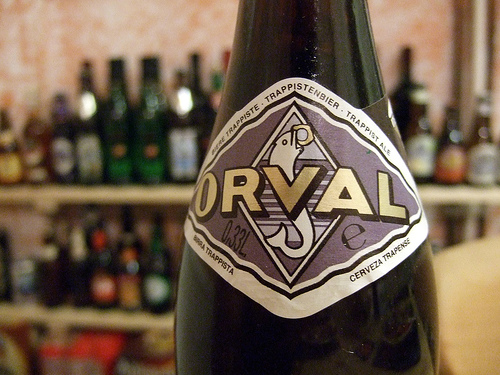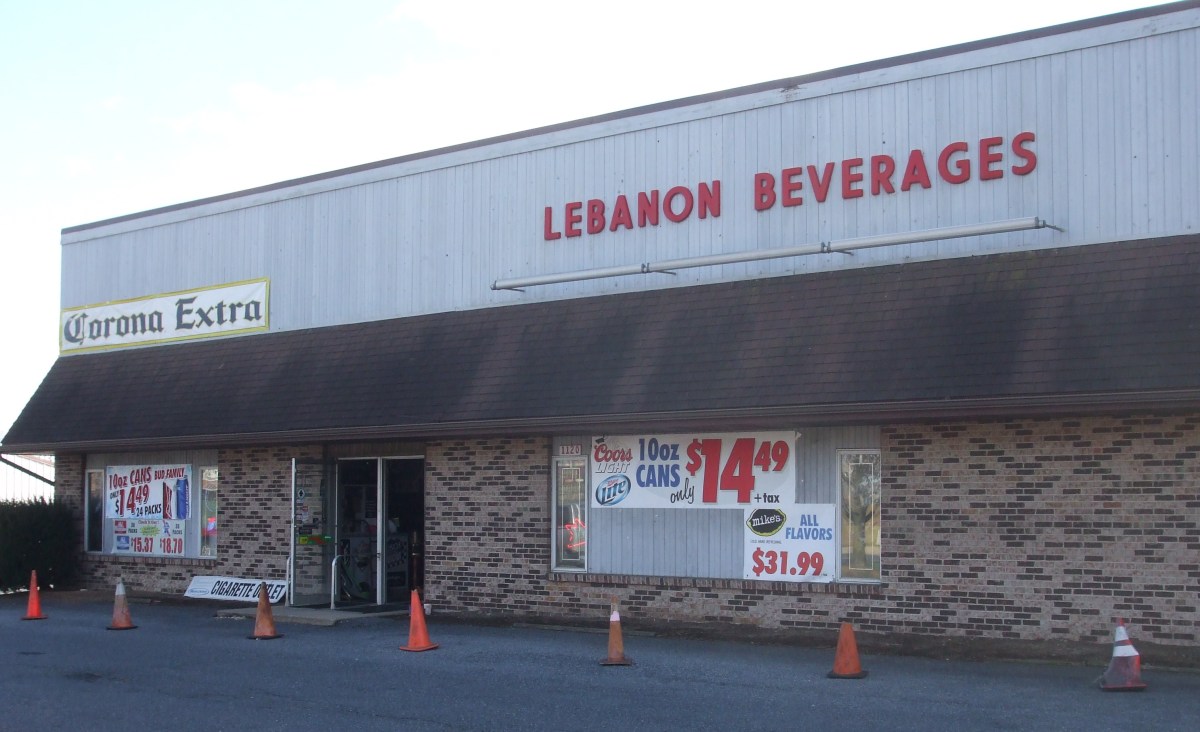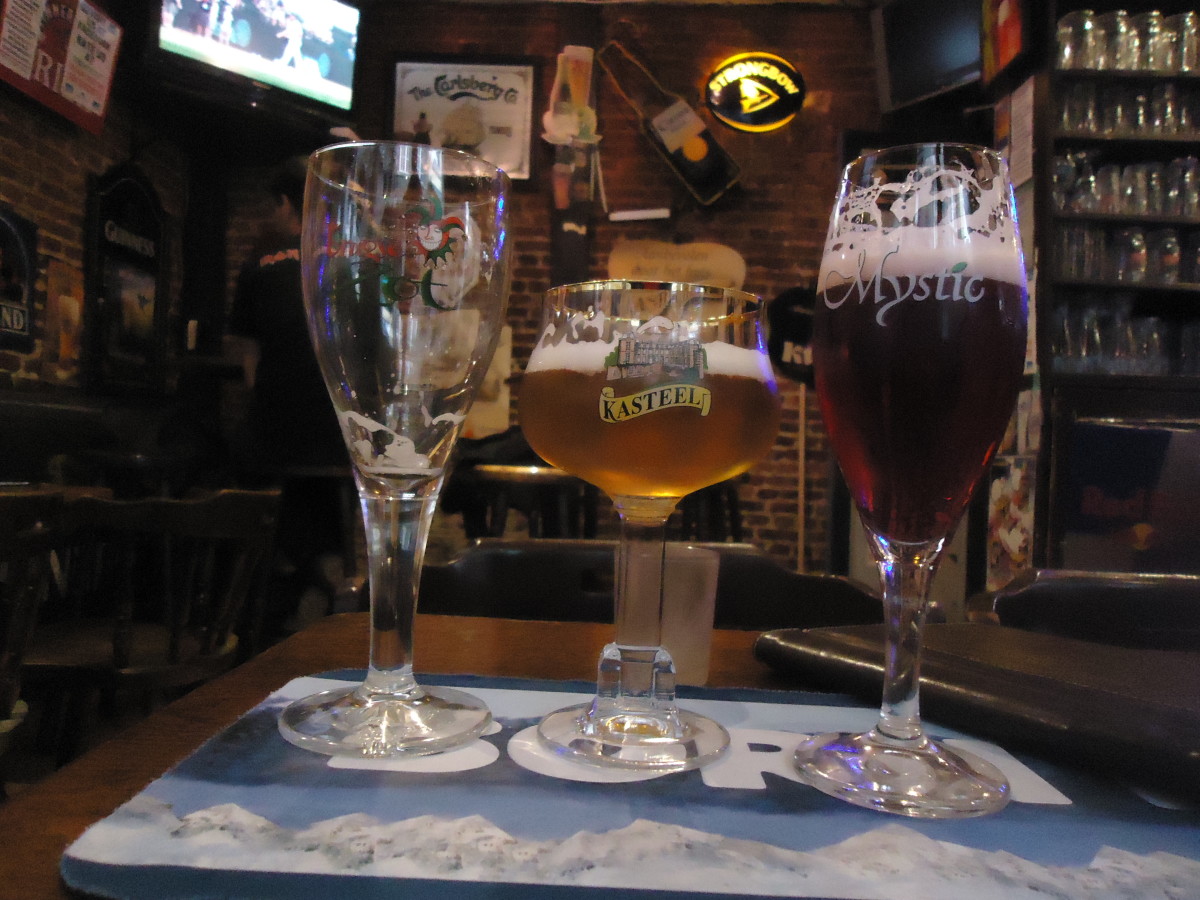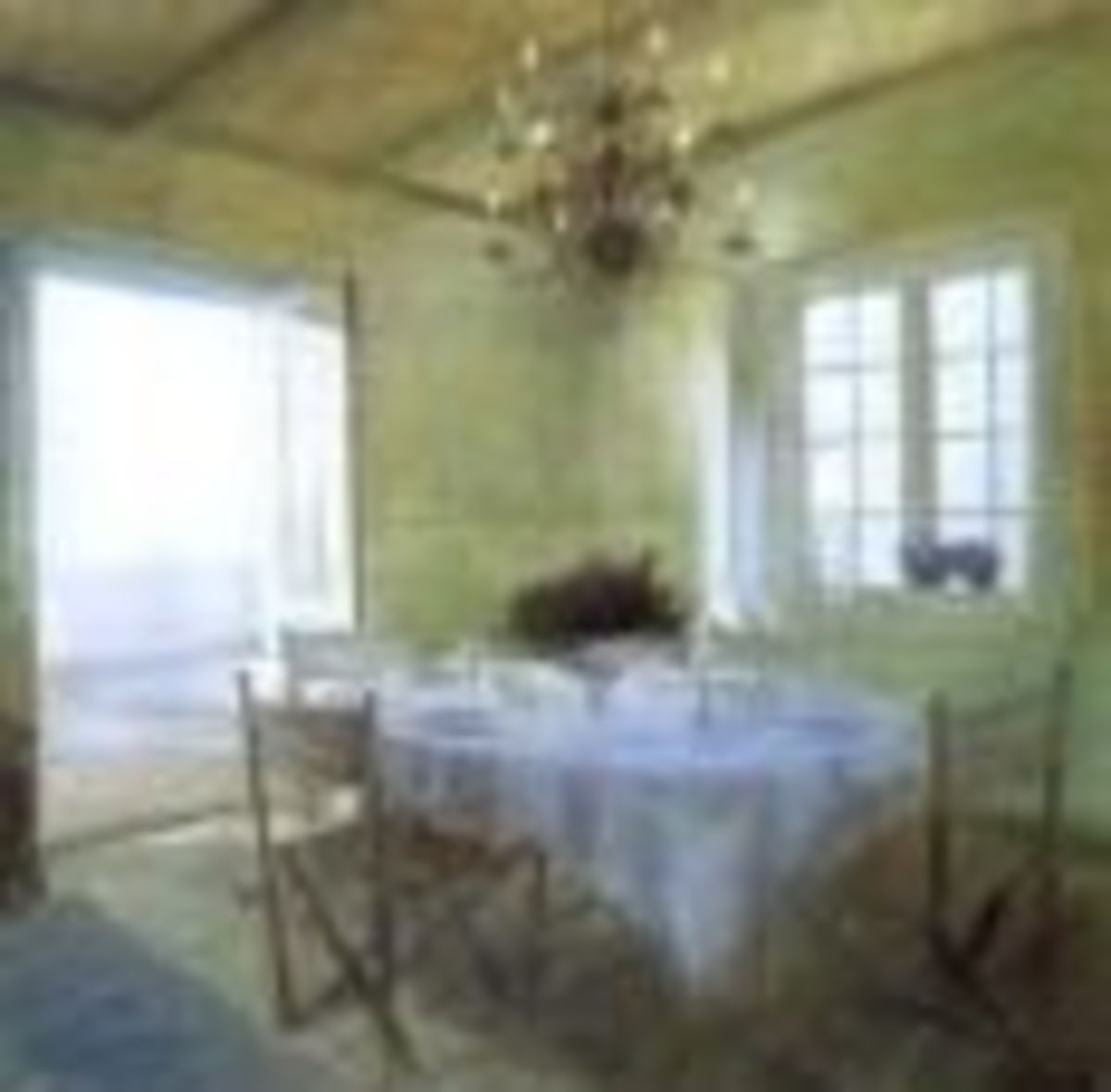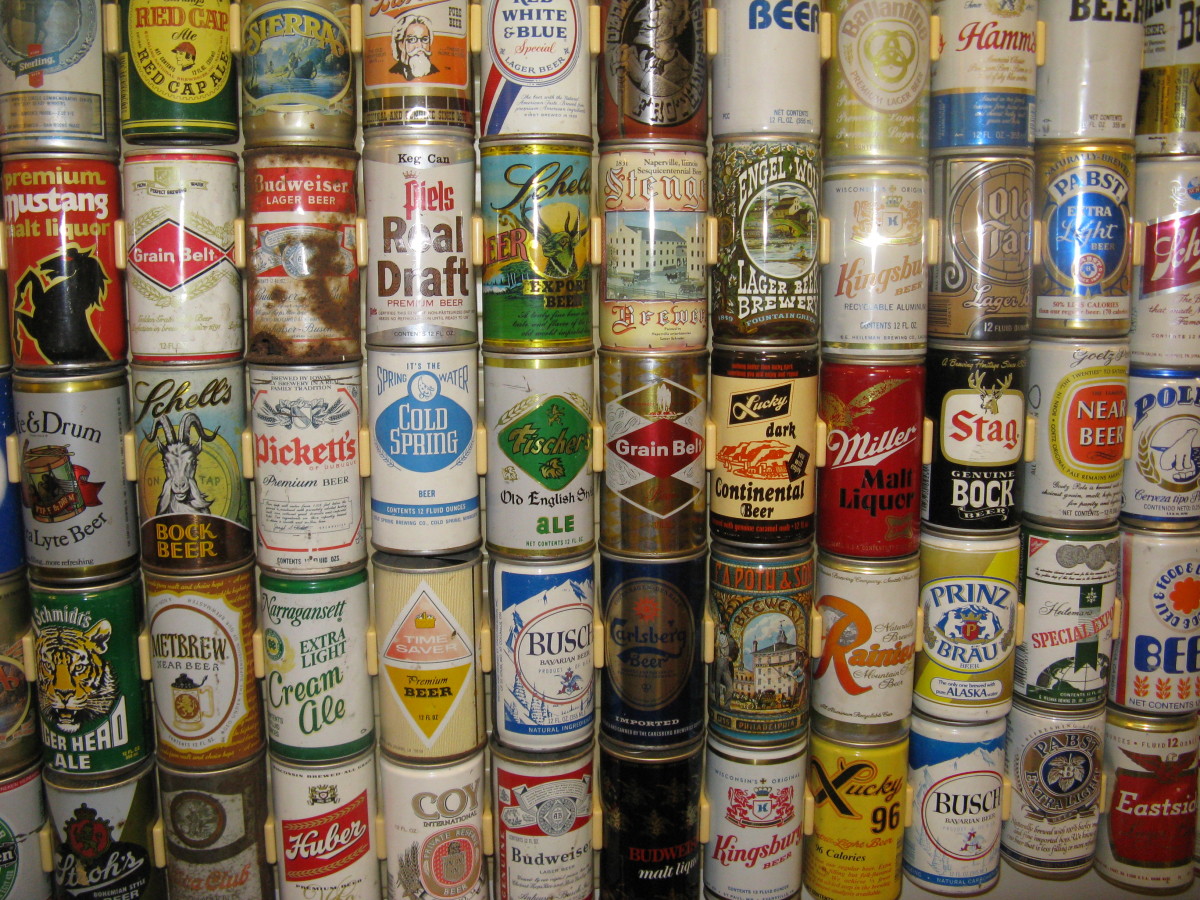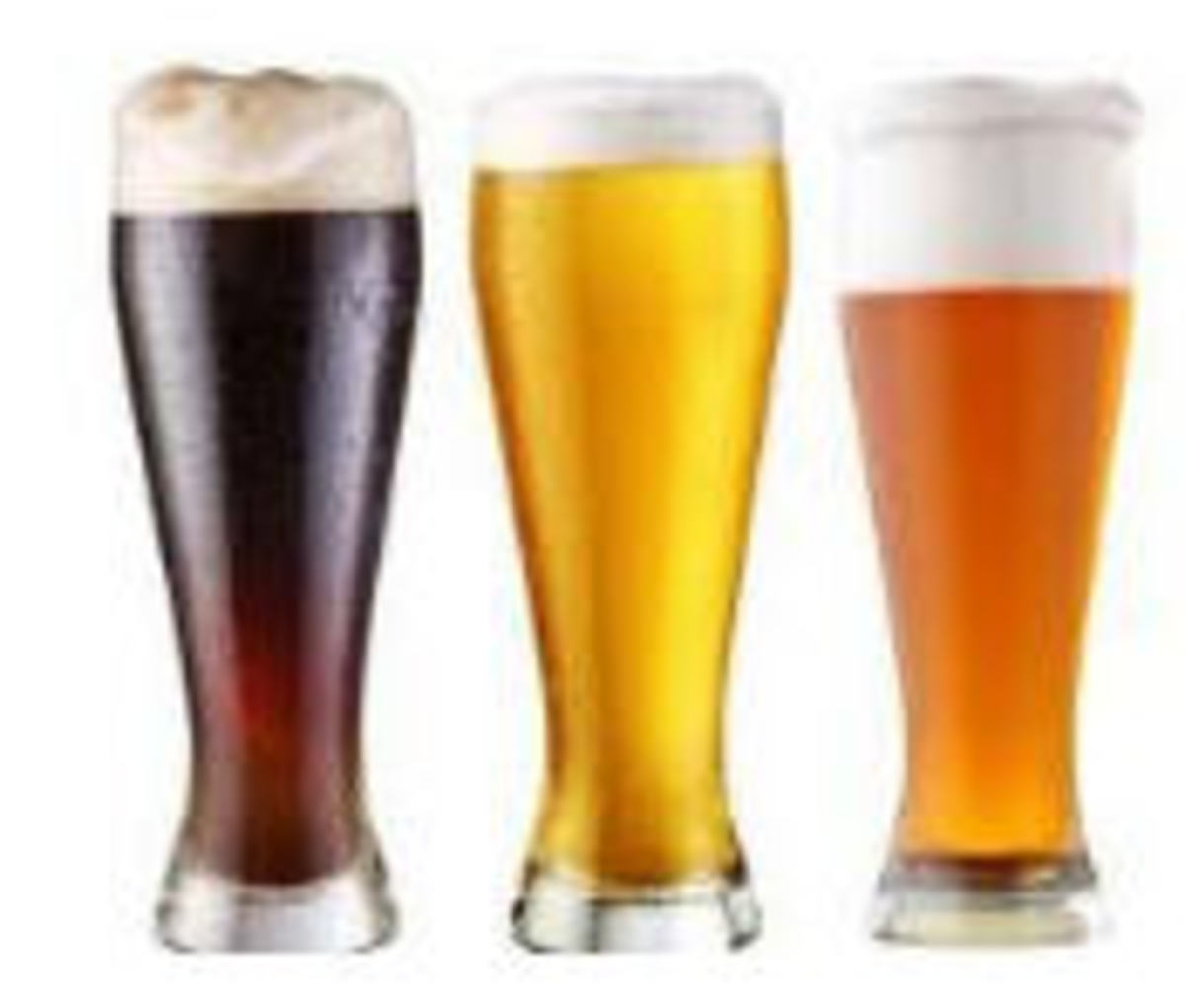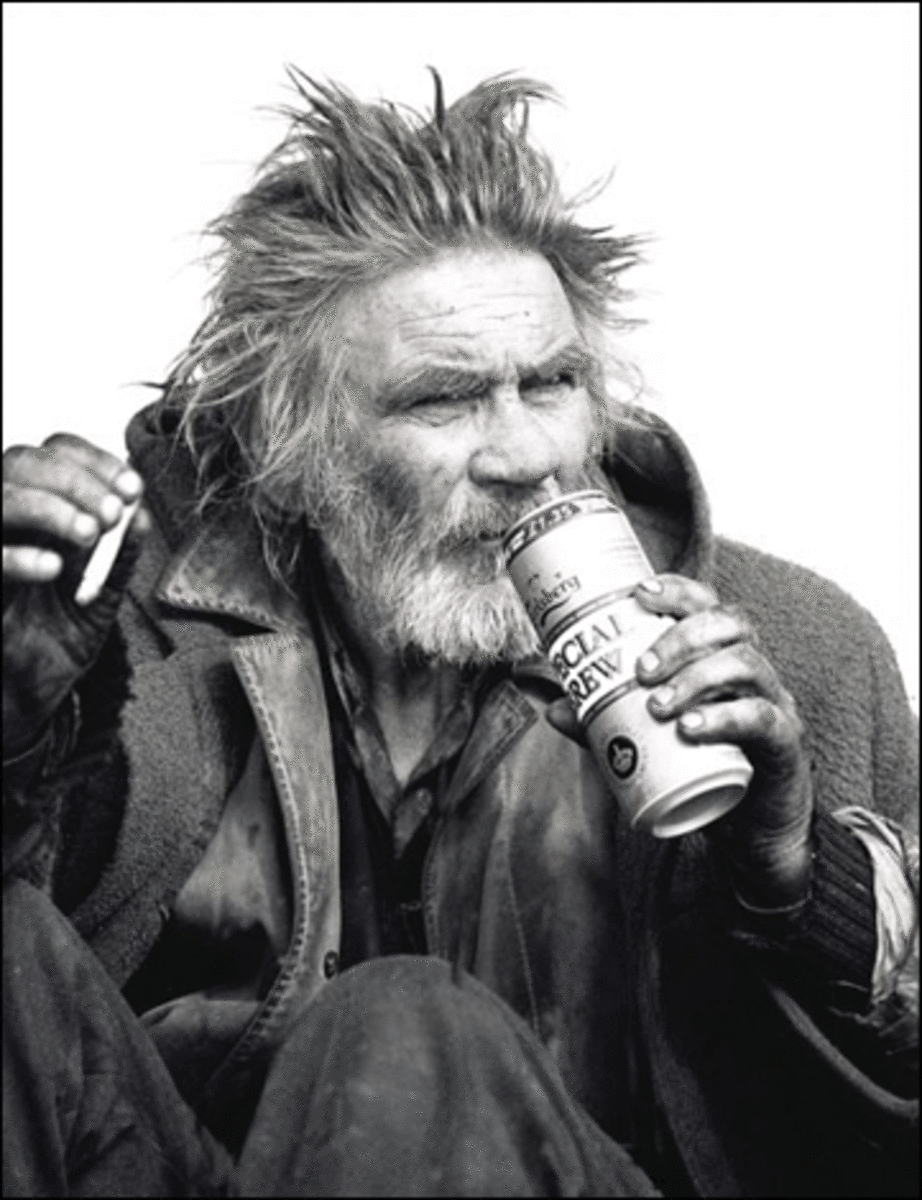Belgium, Land of Beer and Chocolate: A Historical Overview
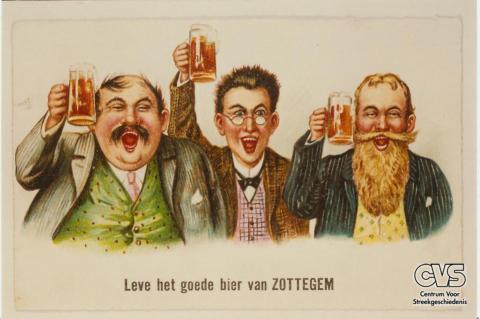
An Article by Eddy Keymolen: "We Belgians did not invent beer. Tough nut to crack for us."
Belgium is not even in the top 10 of largest beer consumers. In the European Union we are head to head with the British, but the Austrians, the Luxembourgers, the Germans, the Danes and the Irish are ahead of us. And the Czechs, as always, finish first, stumbling, way ahead of all the rest. There is a source of comfort though: apart from the British they all get blind drunk in a kind of one-sided way, whereas we do it in style, as you will find out later on.
And we are not the biggest producers either: in 2012 we were seventh in Europe.
The good news show starts here and now: we have the largest number of different beers in the world, of which some are absolutely unique. Even an authority such as the late Michael Jackson – not the American one, but the British version, who has always been white and who could not dance – called us the beer country par excellence and expressed himself in lyrical terms, that could not only originate in the different types of beer he consumed during his research. The man even wrote a book exclusively dedicated to our beers, so go figure. And for once the Flemish and the Walloons fight side by side, as far as creativity, inventiveness and craftsmanship are concerned, not least under the banner of AB-Inbev, the numero uno of the Belgian brewers.
But I still owe you a historical overview
Southerners produce and drink wine, Northerners produce and drink beer, that’s the way it is. If the bravest of all Gauls (as Julius Caesar called the old Belgians) did not invent beer, than maybe their conquerors and our co-ancestors, the Germans or Teutons did, so maybe possibly we … forget about it.
Who would ever have thought that the Mesopotamians invented this nectar of the Gods? (certainly not those who claim that the Chinese were the first ones, as you will read later on). Between the Tigris and Euphrates rivers – the ancient Mesopotamia of the Bible, in nowadays Iraq – they kept themselves occupied, some seven thousand years ago, with brewing a beverage that was remarkably similar to beer, as is proved by a recipe that was found on a clay tablet, dating from approximately six thousand years B.C. The tablet shows Sumerians – the indigenous people of the region at the time – who are cooking fermented grains, and others who let that brew cool down. How does one get the idea, being a Sumerian and all? The archeologists where not there, but excavations taught us that the people of those days swallowed a lot of pulpy substances, often in the form of crushed grains (mostly barley) that they mixed with water. By not giving in to their greed, or possibly because food was scarce at times, they kept leftovers for a rainy day, whereupon the not entirely crushed grains could germinate and starch was transformed into sugar. By fermenting and developing lactic acid bacteria, a slightly acidified porridge must have been the result. This porridge was the predecessor of beer. Where do they come up with it!? I mean both the Sumerians and the archeologists.
The Sumerians seem to have had approximately twenty types of beer, of which the “sikaru”, that played an important role in their religious culture. As a group activity, beer was drunk from an earthenware pot with a straw, to avoid that chaff or other rubbish floating on the beverage, would enter the mouth. Just as our great-great-grandfathers, the Flemish farmers and workers from the nineteenth century, who ate their porridge with spoons out of a common pot (“Jeeze, what a hard lump!” “Ain’t it? I just had it in my mouth too.”).
Those Sumerians, who bore a resemblance with Mongols, were run over by a Semitic people (i.e. related to Jews and Arabs), that went down in history as the Babylonians. Those guys did not bother to take things over from their predecessors: writing for instance, that was probably invented by the Sumerians. Also all agricultural, scientific and religious developments. And apparently all culinary achievements. For the famous king Hammurabi, who went down in history as “the legislator”, ordered in 1800 B.C. among other things that the price of beer should stay affordable for all sections of the population. Furthermore, he imposed punishments to the baddies who dared to dilute beer with water (yeah, you, the Belgian over there, no more jokes about Heineken). Those who tampered with beer or made it bad, were drowned in a barrel of beer. An alcoholic could not imagine a more beautiful way of dying.
Afterwards, the preparation of beer must have spread from Babylon to Egypt, the coming superpower of those days, where the original procedure was refined and the beer started looking more like the one we know nowadays. Although the brewing process was kind of circuitous. The wife in Egypt already knew that fermented, dried and crushed grains gave better bread that was more durable. Those grains were diluted with water and knead into a dough, which was then slightly baked and was the raw material for the preparation of the beer. The baked mass was crumbled, once again diluted with water in a barrel and was then left to ferment a couple of days. Then the stuff went through a sieve, with beer as a result. The old, wise Flemish saying “Where the brewer passed, the baker does not have to come by” did not apply in those days, since these tradesmen where united in one single person
Ramses III had such a high opinion of beer, that he thought one should drink it out of gold cups. Those cups had a content of 3,5 litres, so one begins te ask oneself suspiciously how the pyramids really should have looked like.
The Egyptians where the Belgians of those days. They already brewed barley beer, corn beer, seasoned beer (e.g. with saffron, ginger and juniper) and wheat beer (“Amenemhet, I’ll have another blanche from Gizeh!”). Their most famous brew was Heget (Zythum in Greek), that played an important role in religious offerings and to which healing power was ascribed, not just in its pure form, but also as a basic ingredient of medication.
The Greeks and the Romans appreciated beer much less. As Asterix the Gaul said “They must be crazy, those Romans”. The Greek Alexander the Great, who founded a city near the Nile and called it “Alexandria” (not really bothered by any form of modesty), used to enjoy more a fine wine. By the way, the Greeks and the Romans called beer “wine from fermented barley”. Yeah right, if you start comparing apples with oranges! It was Pliny the Elder, who lived in the first century A.D., who called beer “cerevisa” (do you recognize that one Spanish word that you know so well?), “an intoxicating liquor made of corn, plunged into water”. He derived the name of the goddess Ceres. If you have some etymological skills, you will recognize the word cereal (as in Cereal Killer, remember). Which reminds me: the first French name for beer was “cervoise”, and in Italian “cervognia”. It wasn’t until later that the French and the Italians started deriving their “bière” and “birra” from the Germanic forms of “beer” (Bier both in German and in Dutch). Which, at their turn, originated in the Latin “biber” (drink, beverage). Only the Spaniards kept uncooperative, even though their verb for drinking (beber) is closest to the Latin word.
Before we go any further: we must give credit where credit is due. According to some sources the Chinese were way ahead of the Mesopotamians some two thousand years B.C., because they were the first to apply a liquid production method and knew two types of beer: a non-filtered and not completely fermented one and a filtered and fermented one. This is somewhat similar to printing: did Gutenberg invent it or were it the Chinese a couple of thousand years earlier? In the meantime, their revenge is sweet, since they have become the largest beer producing country in the world.
Discover Belgian Beer: "What wine is to France, beer is to Belgium... all about styles, tradition and innovation in a beer lovers paradise."
So now we are finally in the right place: with the Celts and the Germans, our main ancestors.
According to Julius Caesar – a man who has spoken some very wise words about the Belgians – they immediately had a taste for beer. By the way, the Romans lend our forefathers a helping hand in this. The emperor Domitian, the cad, who at the end of the first century A.D. imposed a reign of terror, ordered his soldiers to destroy all vines in Gaul. So what does a person do? Brewing beer, of course. After the French revolution the same thing happened in what we now call Belgium. But we never learn: in the areas Hageland, Haspengouw, Heuvelland, en some Flemish and Walloon regions, vine growers are producing white wines again.
But anyway, we were in business. Mead was also drunk, but beer flew just as freely from the cow horns. Women’s emancipation was not yet what it should have been, so the distribution of tasks between men and women still left somewhat to be desired: women brewed the beer, men drank it.
Beer played such an important religious role with the Germanic Norsemen, that they regularly drank themselves silly and woke up the next morning in America, Greenland, Russia or somewhere in Western-Europe (and – let it be said in passing - being there anyway, they created Normandy for instance, from where they conquered England). Islam and Vikings: même combat, because the looting Normans who died in battle, could drink beer in Walhalla all day long.
Brewing beer stayed essentially domestic until the fifth – sixth century. At that point the abbey beers were created. For the house rules of the Benedictines prescribed e.g. that they should meet their daily needs with manual labor. Pope Gregory the Great, who lived at the end of the sixth century and the beginning of the seventh century, made sure that these rules got spread over Italy, England and a century later over the whole of Europe. Monks and lay personnel processed grapes into wine, milk into cheese and bread into beer. Who would dare to suspect those nice monks that they intended to drink themselves into oblivion? No, they just considered beer to be a sort of liquid food that was supposed to lighten the heavy, physical labor. And they were not even wrong, because the presence of the vitamin B-complex in beer is simply beneficial to health (yeah, you over there, in moderation!). Furthermore, in those days of cholera and the plague, some harmful bacteria were killed by the alcohol, acidity and the heating of the flour batter. As a result, it was preferable to drink beer instead of water.
Pending the invention of printing, it were also the monks that copied books by writing in the ninth century. Which gives us a very good idea of the evolution of beer up from that time. The Egyptians already had added dates and other fruit to their beer, and the people of the Middle Ages plentifully experimented with spices (ginger for instance) and juniper. Also with hops, that became fashionable in the eight and the ninth century, without being common in the brewing process, however, because the bitter taste was not appreciated by everyone. The role of hop was mainly to be able to store the beer longer. Brewers that used hops were even punished by the landlords, who saw a source of income being reduced as a result of the loss of taxes they imposed on various spices that were added to beer in those days. Those spices were called “gruit” or “gruut” in Flemish, hence the Gruuthuse Museum in Bruges.
One of the first abbeys that started brewing beer from the very beginning, was the one of the Benedictines of Affligem (near Aalst) in 1083. Nowadays, this tradition is carried on by De Smedt brewery of nearby Opwijk (merged into Heineken and part of Alken-Maes, another Belgian daughter company of Heineken, and now called Affligem brewery).
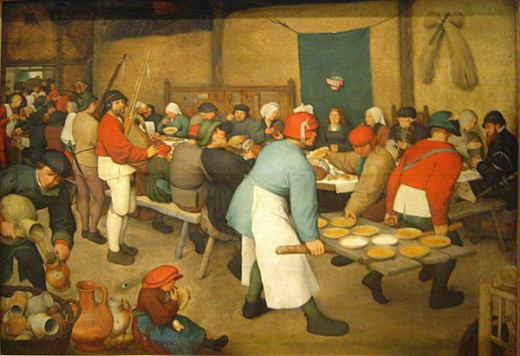
In the late Middle Ages the monks faced competition from secular brewers.
Landlords and practicioners of domestic brewing had already followed the example of the monks, and now breweries were created everywhere (talking of which, I’ll try to be objective but I do have my preferences, and I especially like a beer called Hapkin, a cloudy, pale beer of 8,° from Louwaege Brewery of Kortemark. It is considered to be a “duvel”. The name sounds English, but is actually purely Flemish. “Kin” was the Flemish diminutive form, also “kein”, “ken” in other Flemish dialects – Manneken Pis, remember – an “hap” was an axe. This hap was the favorite weapon of Baldwin VII, count of Flanders from 1111 till 1119. After having split a head here and there, he used to relax a while with a nice beer that was brewed for him in Ter Duinen abbey in Koksijde (at the Belgian coast), where you can still visit the ruins of the abbey. People knew what living was in those days.
Regulations were adopted to organize the brewing of beer. And the politicians of those days were just as creative in inventing taxes as their present-day counterparts. Thus, tavern-brewery “Den Horen” (the horn) in Leuven (Louvain) already paid taxes to the city authorities in 1366. Besides, in those days Leuven owed its prosperity to the brewers. How these people managed to become Artois and later on Interbrew and AB-Inbev, is anyone’s guess.
When Leuven became a university city in 1425, breweries popped up like mushrooms. In 1708, one Sebastian Artois got the certificate of masterbrewer, after having been an apprentice in “Den Horen”, and ten years later he took over the tavern-brewery. In the meantime you know everything about the tumultuous IPO of Interbrew, now AB-Inbev, but untill a couple of decades ago it was still a family brewery, in the hands of a few noble families, who still have some fingers in the pie.
Guilds and corporations were created in the beginning of the fourteenth century. And now look who were the most powerful ones: those of Brussels, Oudenaarde, Antwerp, Diest and – there you go – Leuven and Hoegaarden. To give you an idea of the respect they enjoyed and the means they had at their disposal, just visit the Brewers House at the Grote Markt/Grand Place of Brussels. It was the Brussels brewers’ guild that had the building constructed in 1695 (the first one dated from 1522, the Antwerp one from 1553).
Since every village had one or more breweries and the local brewers adapted themselves to local taste, masses of different types of beer were created, each and every one with a different palette of flavors. So we already had a huge advance in this area.
From the beginning of the fifteenth century hop production boomed in Flanders, and a century later Flanders was by far the biggest producer of hops in Europe, with a share of more than a third of the total production. Nowadays the decline is almost complete. Only in the Poperinge and Aalst-Asse area there is still some hop production. The major culprits for this decline are the low-wage countries and the United States (sorry, guys, I have to be strict, a man’s gotta do what a man’s gotta do).
In the sixteenth and the seventeenth centuries the people from Antwerp ladled 450 liters of beer down their throat, per year and per capita. Such an amount can only make nowadays brewers drool, but we can say in their defense that beer was far less strong in those days, that the personnel of the breweries was partially paid in beer and especially – see above – that beer was much safer to drink than the available drinking water, that often contained germs, which implied that also women and even children drank large quantities of beer.
Developments in industry are sometimes a result of accidental coincidences. The road network until the nineteenth century not being one to brag about, there were no major producers. Beer was delivered locally and supplied at home, in the taverns and inns, rolled in barrels. One ingredient of that beer, malt, was easy to transport, with as a result that malt companies could expand and become an important, prosperous industrial sector. Large breweries only arose nearby rivers, until the industrial revolution led to an extensive road network and good means of transport (especially railroads. The first one in Belgium connected Mechelen and Brussels). This industrial revolution also brought the steam engine, hydrometers, thermometers and mechanical batter mixers. Large companies arose.
We go through it's history, the trappist movement and all the different types of beer you can find in this Mecca of Beer.
We limit our review to Belgian beer, but since it has an impact to our brewers for their exports to Germany, I should also like to comment briefly on the famous
German brewers had to adhere to the Reinheitsgebot. It dates from 1516 and stipulates that beer can only be brewed with barley, hop and water. Afterwards, yeast and wheat were allowed, but that was it.
This Reinheitsgebot goes back to Bavaria which, at the beginning of the twentieth century, at the unification of Germany, imposed it on the rest of the country. The EEC abrogated it in 1987, but if that was a blessing for the German breweries, that’s another question. Adding corn is not really the best way to make a lager beer tastier. So the German brewers decided to unite and to stick to the Reinheitsgebot on a voluntary basis.
Starting from the seventeenth century the monopoly of beer as the people’s drink gradually crumbled. Coffee and tea were imported from the new colonies and as prosperity grew, also wine and liquors came within reach of many pockets. One century later spring waters came on the market and also milk was coming on strong. Furthermore, you can mix that beverage with cacao, another overseas product. Later on soft drinks would follow, sometimes advertising for sanitary napkins (Always Coca-Cola, get it?) And if people drink less, than production decreases as well. Starting from the sixteenth century, the number of breweries gradually decreases and the survivors grow bigger, sometimes after mergers with other companies.
During the French Revolution (from 1792 till 1794) abbeys got hit below the belt by the new rulers. The monks were expelled and the guilds were dissolved. But under the reign of Napoleon the brewing industry, who indeed gradually became a real industrial sector, got boosted again.
If you – as the large majority of beer drinkers all over the world – prefer a lager or pilsner beer, than you are lucky that you were not born before 1842. For only in that year this type of beer was invented. Not in Pilsen, but in the city of Grimma in former Czechoslowakia, a new beer with a pale color was developed by chance. Later on the mutated yeast cells that were necessary to brew this type of beer, found their way to the Bürgerliches Brauhaus in Pilsen, giving it its name, and from there on it could start to make its rise and eventually conquer the world. By the way, this pilsner beer was a variant on an already existing type of beer. In the sixteenth century Bavarian monks had discovered partially by chance that the nature of certain yeasts changed by lagering beer in cold storage chambers, making those yeasts sink to the bottom (“bottom fermentation”) and making the yeasting process last longer. So that beer was stored longer (“lagern” in German, hence the English “lager” for a pilsner beer. The color of those first “pilsner beers” avant la lettre was still amber or even darker, just as all other beers of that time. It wasn’t until 1842 that Bavarian Josef Groll brewed a first gold-colored lager, commissioned by the Bohemians. And that bright, golden color looks even better in that other specialty of Bohemia: its glassware. The first Belgian lager dates from 1928 and was brewed in Alken as “Cristal” (still existing, now part of Heineken).
When one writes a historical overview of beer, one cannot ignore Louis Pasteur. The man lived from 1822 till 1895 and undertook some pioneering work in the field of knowledge of fermentation. Equally important was his discovery that by heating a liquid to 70° C all micro-organisms became inactive, enabling to conserve that liquid much longer. This process is called – how appropriate – “pasteurization”. Many generations of brewers are still thankful to him for that.
In the beginning of the nineteenth century Belgium still had some 3200 breweries. Almost every village had at least one brewery. The first World War changed all that. Due to the mobilization, many breweries had no personnel left or, even worse, no raw materials. The latter remained a problem after the war. So many breweries were wiped out. At the end of the war only half of the companies remained. And not everyone was eager to start all over. There were also some mergers avant la lettre: combinations of different breweries. In 1920, Artois from Leuven was already the largest brewery in Belgium with 3,4 million kg of processed raw materials (malt and cereals). The list of those days mentions a few combinations that did not make it. Remember Wielemans (now a modern art center in Brussels) and Vandenheuvel.
After the first World War bottom-fermented beers gained, uh, more and more ground, as I stipulated earlier. In that brewing process yeast is active on a low temperature of about 7 °, and precipitates on the bottom of the vat. At top-fermentation, at about 20°, the yeast floats at the top, so there you go … Between the two world wars there was no stopping this evolution. The people seemed to prefer an easily digestible, bottom-fermented beer that did not get straight to the head, and hence the survivors of the sector were those who responded to that trend. Such as – again – Artois, with Stella, that was launched on a large scale in 1926, with a campaign that even nowadays would be nothing to be ashamed of. So Stella quickly became the beer that was tapped the most in pubs, not just because of the campaign (well maintained cooling equipment, fresh on tap, pubs with a high flow rate, often in the neighborhood of railway stations) but also because of the attention that was paid to the quality of the beer. A Stella became synonymous with a fresh beer, so people quickly felt at home were their Stella was (or something like that).
The second World War meant gloom and doom in every respect, boundless misery and endless suffering. Brewers were not spared either. “Ersatz” was the magic word that had to complete the shortfalls. Only hop was available in sufficient quantities. The largest part of domestic barley went to the occupier, whereas rice and corn were no longer imported. There were no more crown corks, so that they were even recovered or replaced by the rubber seal rings that afterwards still kept in the running for a while to close table beer bottles and have a nostalgic revival in gift shops.
In order to give some flavor to the bland beer, often not more than 0,8 % alcoholic strength, all kinds of additives were used.
And so as to make the misery complete, the brewers had to deal with stacks of paperwork during those dark war years.
Just as after the first World War there were a whole lot of brewers that abandoned. In 1946 only 775 brewers remained.
So then you have the largest number of types of beers in the world, and then a bunch of miscreants from abroad come creaming a part of the market with a clever marketing strategy that mostly appeals to snobbism. Since the sixties one can no longer imagine a Belgian pub without the Danish lagers Carlsberg and Tuborg and in a lesser way the Alsatian Konenbourg. Although in the meantime they have gone backwards. What’s in a name, Artois thought, berg, borg, bourg, we can do that too, so Loburg was born. Artois from Leuven was also the Belgian brewer who merged with Piedboeuf from Jupille near Liège, to create Interbrew and go international with takeovers in Belgium and abroad.
In 2001 there were some one hundred breweries left in Belgium, 20 of which in Wallonia but at the beginning of 2014 (latest data) there are some one hundred and fifty again. One can have reservations about scale and mergers, but it is a fact that you cannot claim that creativity is affected by it. Under the wings of Interbrew, some of the breweries that were taken over, keep increasing their product range. Hoegaarden for instance: the DAS was recovered, Julius, Verboden Vrucht (forbidden fruit), Speciale and Grand Cru, Rosée and Citron completed the picture.
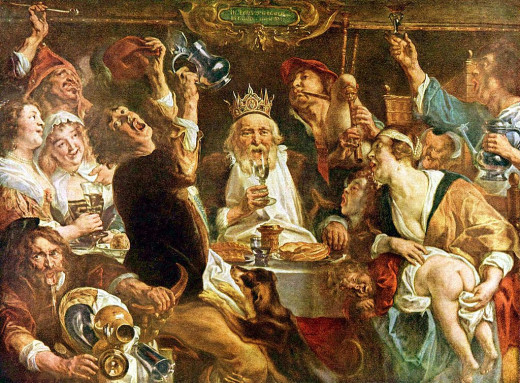
And the number of new types of beer is still increasing, whereas in most cases it is difficult to put them in a category.
If you cross the border to one of the neighboring countries, then you remember: in Germany you can choose from a couple of lagers, a couple of wheat beers, a couple of dark Alt beers, and that’s about it. Holland is doing some catching-up – also in the culinary field, for that matter – but they are not yet about to overtake us. The United States are coming on strong too. But this centuries-old tradition can not be broken in a couple of decades.
Brewing beer is in our blood. Yeah, drinking too. But remember: beer brewed carefully is to be consumed with care!
